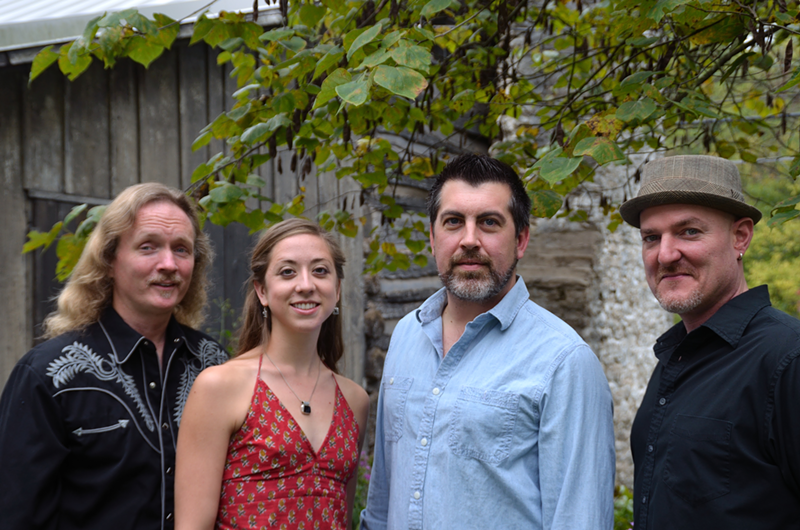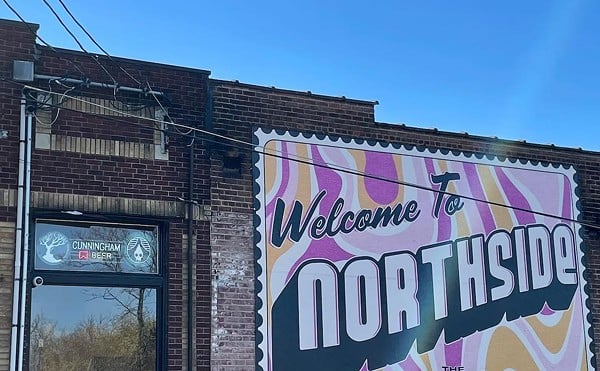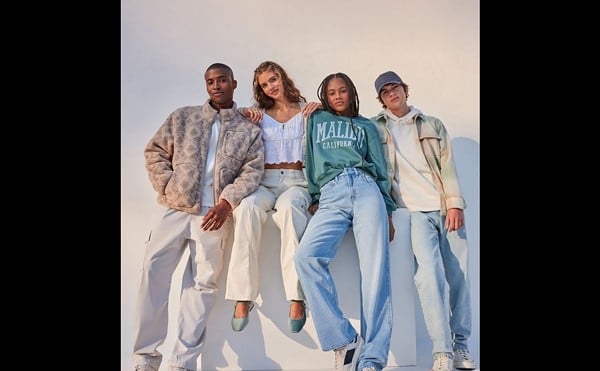There are simply not enough robots made out of wood these days. Well, that is the brilliant thought that popped into my head as I contemplated the name of the band Hickory Robot, anyway. The Cincinnati-based quartet is known for its acoustic music, blending Bluegrass-influenced grooves with other Roots music fare. However, on the recently released album titled Sawyer, the group opens up its sound by occasionally using electric instruments and percussion to bring new songs to life.
Hickory Robot features Scott Carnder on mandolin, Jim Pelz on guitar, bassist Mike Georgin and Lauren Schloemer on fiddle, mandolin, guitar and vocals. Each member of the band came from traditions other than Bluegrass and American Roots music, (“We’re all a bunch of Rush heads”) and that adds up to an interesting gumbo of sonic influences.
Carnder started out as a jam band bass player. Eventually, his love for the Grateful Dead led him to the recordings that Jerry Garcia made with mandolin great David Grisman. A simple comment made to his spouse unexpectedly sent Carnder down the mandolin path.
“I remarked to my wife one day that I’d really like to learn how to play the mandolin,” Carnder says. “For our next anniversary, she got me one, out of the blue. I fell in love with it and didn’t take it off (my shoulder) literally for about three days and I realized that was what I should have been doing all along.”
Once Carnder was onboard with the instrument, he began to soak up a wide-array of mandolin influences.
“Right about that time, I discovered Chris Thile and I was enamored with his style and his facility and imagination on the instrument, which was like no one else,” Carnder says. “Then, I was able to take a couple of classes from Mike Compton of the Nashville Bluegrass Band and got into the Bill Monroe style through him. So Grisman and Thile and Bill Monroe filtered through Mike Compton informed a lot of my sensibilities on the instrument.”
Guitarist Pelz came to Hickory Robot after years of touring as a Jazz trombonist. He played with the Tommy Dorsey Band and the Artie Shaw Band and performed with legends such as Tony Bennett and Cab Calloway.
“The trombone probably filters down into my (guitar) playing in terms of melody and swing,” Pelz says. “All of the music I like has a little bit of swing to it in its own way. Bluegrass does, Country does, Blues does, so I don’t know if it is a direct correlation, but it is there. The horn makes you play one line, a melody, a melodic line, hopefully. That is important to me.”
Once Pelz began to explore more acoustic music, other influences crept into the mix.
“Tony Rice and Norman Blake,” Pelz says when asked about his favorite acoustic guitarists. “I love Norman Blake. Those are the two big guys for me. I like Bryan Sutton, and I could go through the list. But Tony and Pat Metheny occupy a certain place in my musical life. To me, they are more similar to each other than Tony Rice is with any other guitar player. They are just transcendent with what they do with their instruments. I love Doc Watson, too.”
Unlike a lot of bass players, who take up the instrument on a dare or because no one else wants to do it, Georgin sought out the bottom.
“Actually, I was drawn to the bass,” Georgin says. “I played the violin for a couple of years in fifth and sixth grade. But, when I got to seventh grade they offered me the upright bass and I jumped at it because it was a lot bigger and less girly than the violin. I never wanted to move to anything else.”
Hickory Robot was an established trio when Georgin joined the group, but the learning curve was soon conquered.
“I really didn’t know any of them that well,” Georgin says. “I jammed with Scott and a few times with Jim and I actually didn’t know much about Bluegrass. But, I was interested, and they have been very patient and helpful so it has been great.”
Schloemer’s vocals and multi-instrumental abilities are a big part of Hickory Robot’s sound. She was a classically trained violinist from the age of 7, and then she heard the music of Alison Krauss.
“When I realized that Alison was a fiddler first and then a singer, that inspired me that much more to dive into fiddle music as well as singing,” Schloemer says. “I studied Jazz in college because I wasn’t (satisfied) with what was happening in the Classical world. I was ready to improvise and was ready to use notes and skills and just play something that I felt inside of me instead of reading music that was written and arranged a thousand years ago. I love Classical music. I love playing it. I miss it. But it wasn’t feeding my soul like Bluegrass and Folk music does.”
And so, with a wonderful myriad of influences and blended styles, Hickory Robot has stepped up with the release of Sawyer, an album they hope will take them to the next level.
“Sawyer is a natural progression and we’re really dedicated to serving the song,” Carnder says.
“Instead of worrying about labels and being in one vein, it was about, ‘What makes this song the best?’ We have drums on three of the tunes and a lot of percussion on a couple of tunes. It was about serving the song and not worrying about what can we pull off live or what people are going to think, but about what is going to make this tune the best it can be.
“We’re really moving outside that Bluegrass label and we’ve been calling it Newgrass and Americana. It is tough to categorize what this new album is as it has a lot of traditional Bluegrass elements. But, in some ways, I can’t point to another album that sounds like this one.”
HICKORY ROBOT (hickoryrobot.com) performs downtown at Taqueria Mercado this Saturday at 8 p.m.






